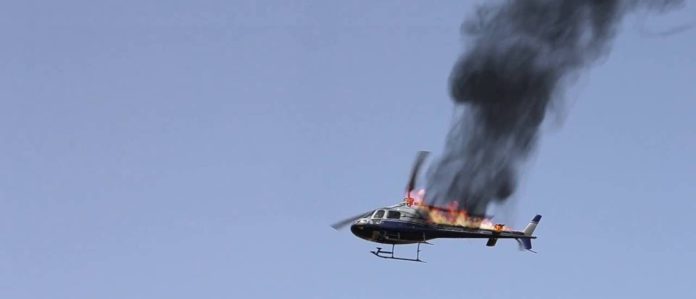- Of all the modes of transportation, air travel is considered safer than road and sea. There is a reason why so much confidence is attached to air travel as compared to the other modes. With mind-boggling innovations, developments, and advancements in the aviation sector, the safety aspects of air travel have achieved tremendous traction over the last decade or so. The majority of travelers are not scared to avail the air services as the increasing percentage on this front amply demonstrate. The fastest means of travel is also synonymous with the highest safety standards. No wonder, every country incessantly attempts to improve on this aspect despite encountering challenges along the way. But the situation has altered a bit of late going by the look of things.

PC: CDC
- I am referring to the increased incidents of helicopter crashes reported over the last few years leading to the tragic loss of lives in India. We all know how the first Chief of Defence Staff General (Retd) Bipin Rawat was killed in a helicopter crash last year. Most disturbingly, helicopter crashes are being reported with alarming regularity raising questions about the safety standards surrounding the bird. A recent tragic chopper crash in Kedarnath resulted in the killing of six passengers and the pilot only adding to the list of growing helicopter fatalities over the years. The chopper had taken off from Kedarnath shrine and was headed to Guptkashi when it encountered bad weather. What was supposed to be a pilgrimage resulted in untimely deaths.
- Reports suggest that the pilot of the ill-fated copter had tried to return but the chopper experienced a tail hit as it was flying too low, killing all on board. Note that there are a total of nine operators, including government-run Pawan Hans, that operate heli-services on the Kedarnath route. The question is why unsafe practices continue here despite the regulator repeatedly identifying serious violations of rules. Checks on airworthiness and other standards such as whether operators are blatantly flouting guidelines by flying too low or operating in poor weather, do no good if the follow-through is not effective. There are also questions about pilot training. Inadequate acclimatization can be extremely risky in challenging weather conditions.

PC: IANS
- Notably, by their very design, helicopters offer very little margin for error, especially single-engine choppers that have to be flown visually. Add to this the issue of old choppers continuing to be in service. Remember, the aging flying birds like outdated Chetaks and Cheetahs of the 1960s-70s vintage continue to pose several challenges to the Indian Air Force even now. The country is seeing a mix of pilot errors, poor machine maintenance, and a weak regulatory framework. Indeed, in hilly terrains or other ecologically sensitive areas, poorly regulated commercial choppers pose an even greater danger. This is an old malaise that is blatantly disregarded despite calls for accountability on the part of operators. The regulators must act fast to curb the menace forthwith.






